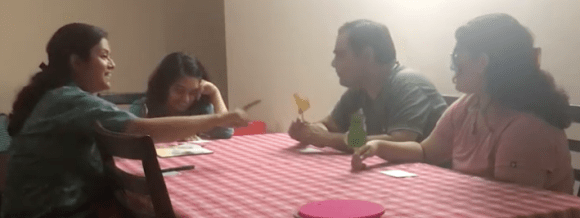Recently, I became an ambassador for RASA (Ramana Sunritya Alaya) and TAHD (Theater Arts for Holistic Development). TAHD was developed by Dr. Ambika Kameshwar, founder and director of RASA (Ramana Sunritya Alaya). In theater arts classes, I do dance, storytelling and drama.
Why should neurodivergent children and adults learn theater?
Theater arts is relaxing. Theater arts is enjoyable. Theater arts provides opportunities to express ourselves in different ways. Theater arts helps us develop many skills.
Expression and Abhinaya
In Indian natya, there are four forms of abhinaya or expression. These include body language, speech, attire and props, and emotional expression. In Indian natya, body language is called angika, speech is called vachika, attire and props are called aharya, and emotional expression is called satvika.
My TAHD experiences include these forms of abhinaya. For example, I narrate stories and record them every month. My first story was the white peacock. I narrated it on my birthday. This narration includes all four forms of abhinaya.
• Angika abhinaya: Body movements (e.g., bharatanatyam mudra and hand movements) are used throughout the presentation.
• Vacika abhinaya: Story narration is the speech part of the abhinaya.
• Aharya abhinaya: Thanks to Manu Sekar’s mother (Manu is the Founder of HashHackCode, an organization where I learn web development) for stitching the attire for my birthday. Originally, I wanted a maroon kurta. Then, I decided to choose colors that would work with the peacock story!
• Satvik abhinaya: Facial expressions and hand gestures were used to communicate how the characters feel.
TAHD in Daily Life
Communication in life also involves these four modes of expression. We use these four modes of expression throughout the day as we play more roles. TAHD teaches all four modes of expression and prepares us to communicate better in life.
TAHD is not a drama program. It is a program that uses Indian natya to help us develop our communication and other skills. Practicing TAHD daily develops skills for daily living.
Ananth’s Adventures Storyboard
I am creating a planner and storyboard to describe my learning journey. My storyboard is organized according to the 4Es of TAHD:
• Exploration
• Experience
• Expression
• Enjoyment
My storyboard is available here
https://miro.com/app/board/uXjVM_HfeEY=/?share_link_id=258586415870
In this article I introduced the four forms of expression. I will discuss other elements on my storyboard in future articles.
TAHD in enjoyable because we can practice and use all four modes of expression. I hope you will explore TAHD too!
Visit my Youtube channel Ananth’s Adventures. The list of videos on my channel is available here.
https://docs.google.com/spreadsheets/d/1hFF4h7dN0BMy5t11-EfVOy1vqc–FiXZpa3vO1-zCHg/edit?usp=sharing
Creative representation for this blog is done by our extremely talented CreativeSaathi associate Vinayak Raj









